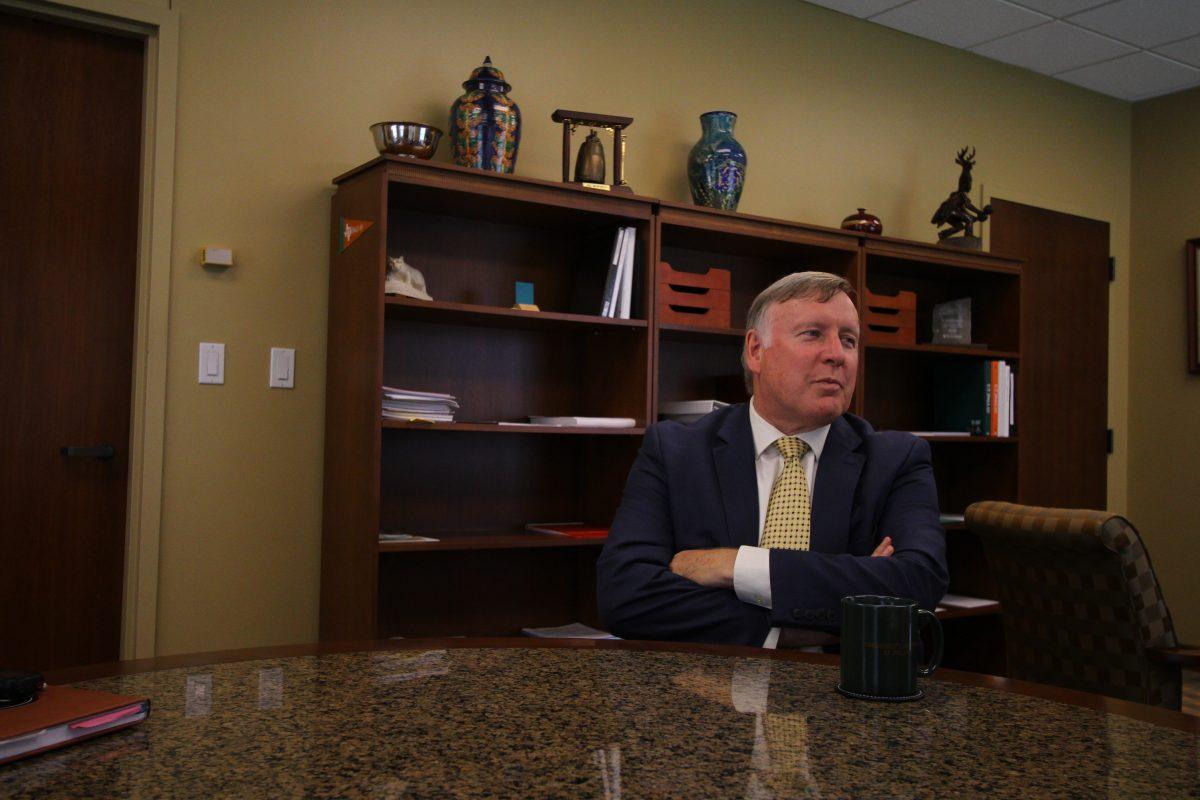President Richard Benson declared Dec. 21 as Tier One Day to mark UTD’s achievement in reaching Tier One status.
For years, UTD administrators have pursued the goal of making UTD a Tier One university. They aimed to demonstrate UTD’s progress in influencing the Metroplex as a premier institution.
“Tier One was my predecessor David Daniel’s rallying cry, which was to take UTD from being a very good university to one that truly had a national impact through its research and the students we graduate,” Benson said.
Tier One status itself is not sharply defined because there is no official set of criteria. Certain external benchmarks determined by institutions like the Texas state government and Indiana University must be met, but school administrators make the announcement after looking at a variety of other factors as well. These include the academic ability and size of the student body, the facilities available, the research capacity and more.
One of the first steps in external recognition is being listed in the Carnegie Classification of Institutions of Higher Education, which is determined by the Indiana University School of Education. In February 2016, the Carnegie Classification, which is released every five years, labeled UTD as R1 for the first time. R1 indicates that UTD is one of the top 115 schools in the nation based on the level of research activity.
“For years they have sort of clustered universities really based on research magnitude. For a very long time, we were sort of in that second echelon (which was) very good, but we have moved into the top tier,” Benson said.
Besides the Carnegie R1 classification, a multitude of other factors go into being a Tier One university, such as student academic level, research programs and infrastructure.
“(Tier One status) is somewhat ill defined but you know when you’re there. You know it because of the sorts of students who apply, the research projects you can attract (and) the sorts of new faculty and staff you are able to hire,” he said.
Another classification that helps determine if UTD is Tier One comes from the state.
“The state of Texas also has put out some benchmarks for what they call national research university fund, or NRUF. To make our university eligible for a nontrivial investment, about $9 million from the state, we have to hit certain benchmarks (for two years in a row),” Benson said.
UTD is about to hit its second year of qualifying for NRUF, which can support the research capacity of the university. Katherine Morales, the director of communications, said the increasing number of new academic programs available at UTD can help the university qualify for NRUF.
“Some examples would be Brain Health, Neuroscience. I mean, just ten years ago, the engineering department had EE (electrical engineering) and CS (computer science), she said. “We went from two and now we have … six.”
For Benson, attracting researchers and students are the two biggest indicators of UTD climbing to Tier One status.
“Students have many, many, many choices, hundreds of choices. You don’t have to come to UTD, but many students choose to, in fact in ever increasing numbers … People want to come to UTD for an education,” he said. “And the same thing is true for research. Research is highly, highly competitive … but people choose to come here. That’s why I feel we’ve reached President Daniel’s goal.”
UTD meets the needs of students by offering academic programs to make them successful in the modern world. Benson said that is why students are increasingly choosing to attend the university every year.
“As we’ve offered majors that are very much in demand … and made it clear that students that come here will be taught by first rate faculty teachers. That makes us attractive,” he said.
Benson said UTD’s modernity is an important factor that sets it apart from any school and helped it reach Tier One status.
“The newness just keeps it interesting. We have some very fine facilities,” he said. “(What’s) changing rapidly is just the physical presence. That’s a major factor attracting students and faculty; new buildings and modern facilities.”
With all the recognition and esteem of a Tier One status, students won’t feel the effects of it until later. Tuition will not be affected by this change.
“The value of your degree gets better and better. (It) will be at the lowest right before you graduate. Thirty years from now when you graduate and have that diploma on the wall, it will be very significant,” Benson said.
Carter Haines, an associate research professor who works in the Nanotech Lab, has conducted research at UTD for years. Like Benson, Haines sees Tier One as a marker of excellence and believes that Tier One is an achievement of all the hard work that researchers have been putting in for years.
“Tier One is a symbol … It’s important for helping bring in good, high-quality undergraduate students,” he said. “But for me … it’s not a switch from zero to one. It’s indicative of this … continuous progression … Tier One is a milestone along the way.”
For Benson, Tier One status is only the beginning of a new challenge. Maintaining the position and continuing to innovate are among his major goals.
“We’re not done founding his university. We are still defining UTD,” he said. “From the very beginning it was stated, ‘We should become the MIT of the Southwest.’ I actually think that’s too limiting. I want to be more than that.”











